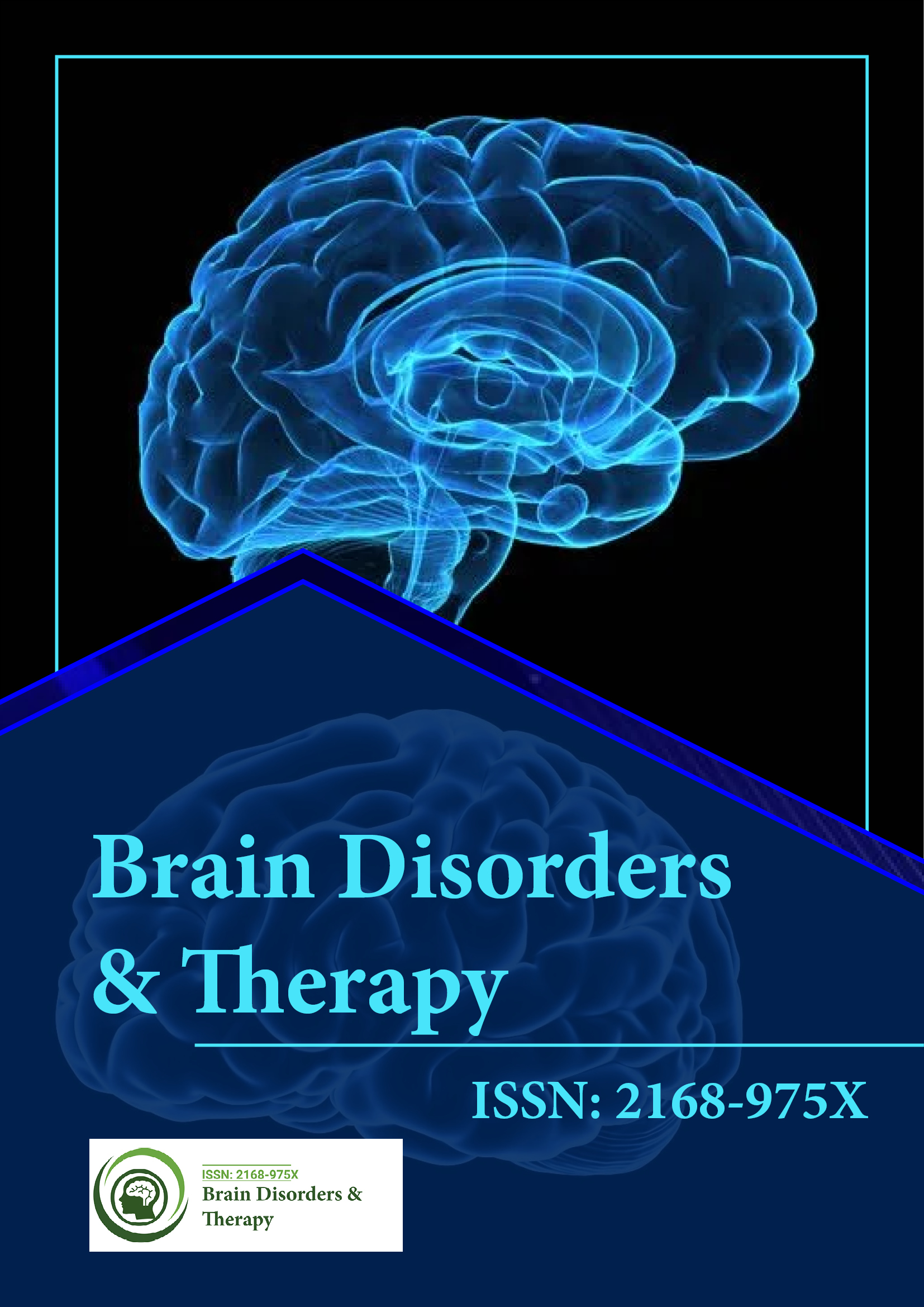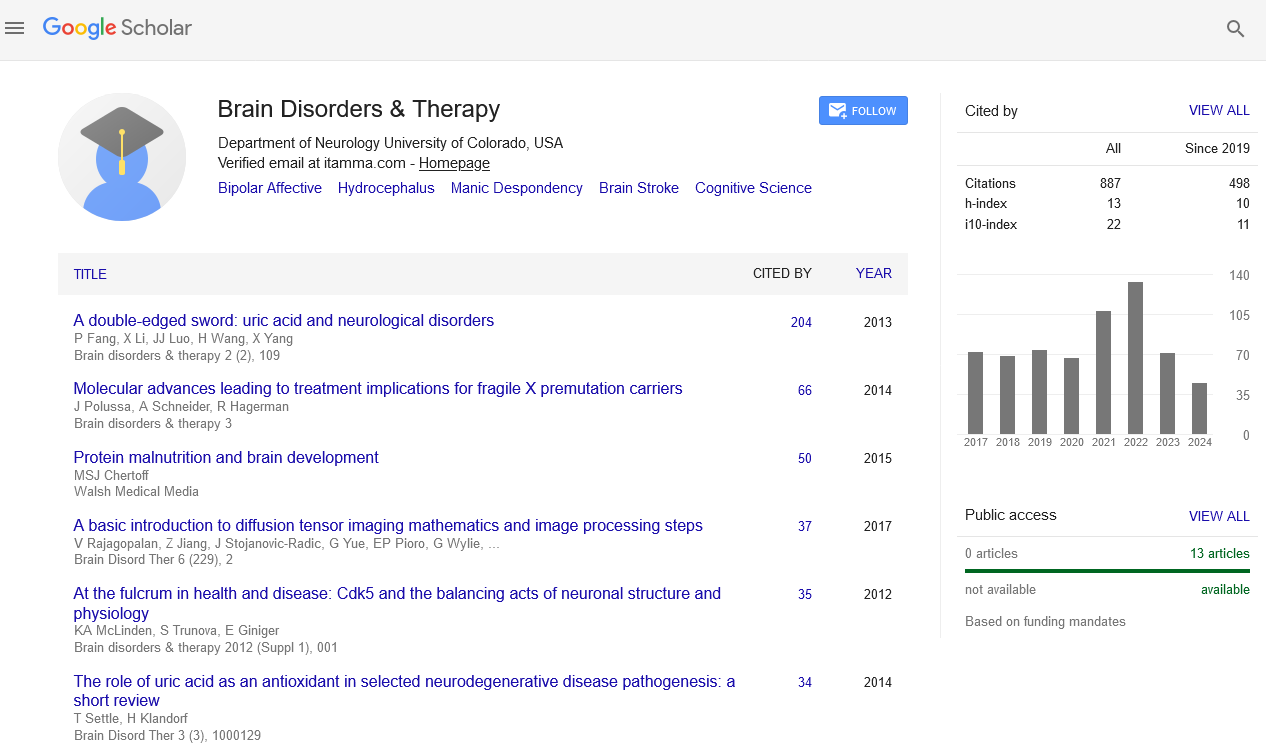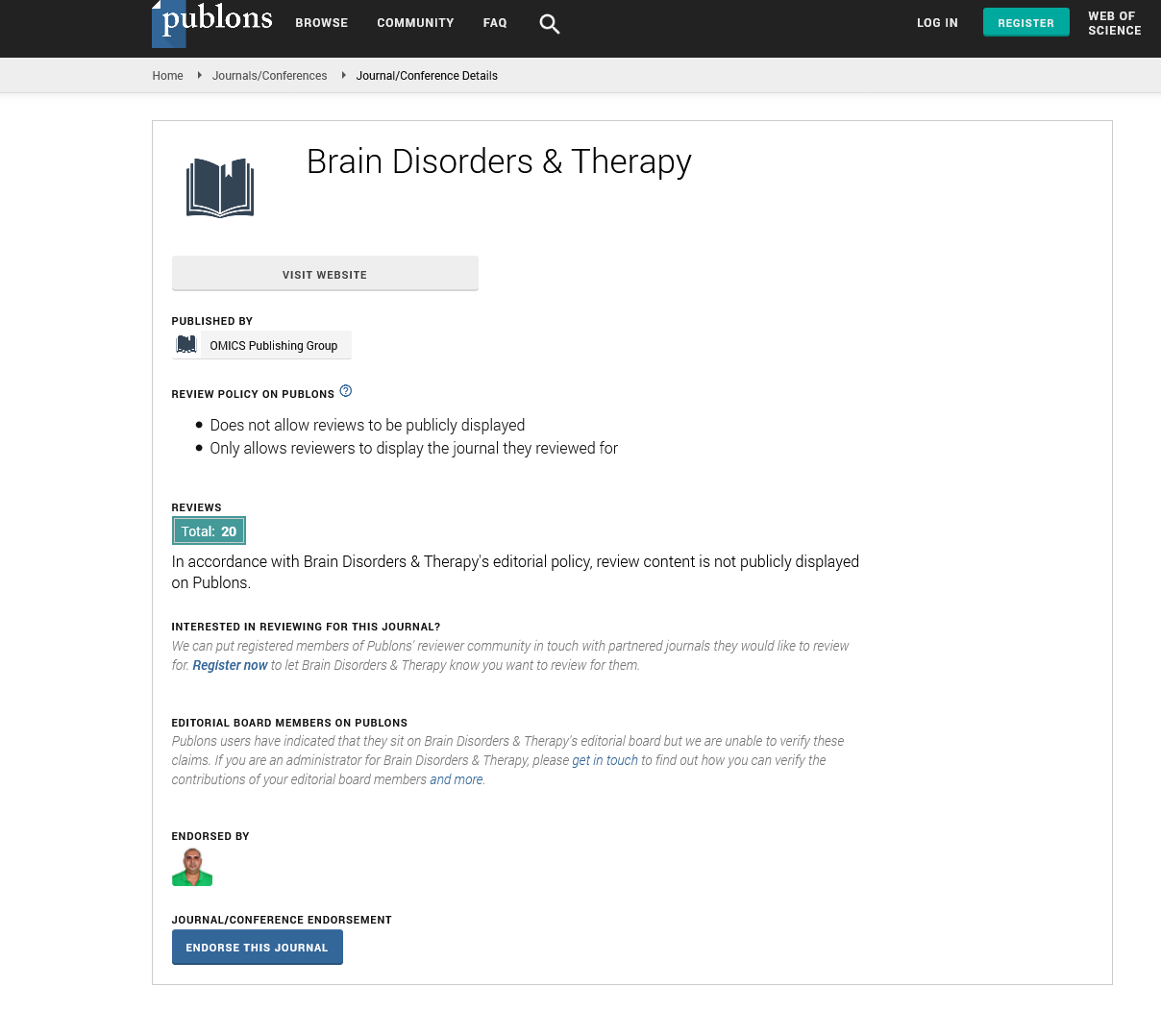PMC/PubMed Indexed Articles
Indexed In
- Open J Gate
- Genamics JournalSeek
- JournalTOCs
- RefSeek
- Hamdard University
- EBSCO A-Z
- OCLC- WorldCat
- Publons
- Geneva Foundation for Medical Education and Research
Useful Links
Share This Page
Journal Flyer

Open Access Journals
- Agri and Aquaculture
- Biochemistry
- Bioinformatics & Systems Biology
- Business & Management
- Chemistry
- Clinical Sciences
- Engineering
- Food & Nutrition
- General Science
- Genetics & Molecular Biology
- Immunology & Microbiology
- Medical Sciences
- Neuroscience & Psychology
- Nursing & Health Care
- Pharmaceutical Sciences
Cerebellar stroke and vertigo syndromes: Similarities and changes
5th International Conference on Brain Disorders and Therapeutics
November 29-30, 2017 | Madrid, Spain
Drini Dobi
University Hospital Center "Mother Teresa", Albania
Keynote: Brain Disord Ther
Abstract:
In generally, the symptoms of vertigo syndromes overlap with cerebellar stroke, and approximately 0.7-3% of isolated vertigo have cerebellar stroke. The clinical diagnosis is an important modality, because the computed tomography is 26% sensitive for acute stroke. Vertigo is defined as a pathologic illusion of movement. Most commonly experienced as a spinning sensation, it arises from a pathologic imbalance in the peripheral or central vestibular system. Benign paroxysmal positional vertigo is a distinct condition not typically confused with cerebellar infarction. The paroxysms of intense symptoms lasting less than a minute are defining, as is positional provocation. Meniere�??s disease is suspected in the patient who presents with simultaneous vertigo and cochlear complaints. Episodes commonly last a few hours, although they can range from 20 minutes to a few days. Formal diagnosis requires hearing loss documented on audiologic examination on at least one occasion and patients may have normal audiologic examination between episodes. The migrainous vertigo appears to be like an aura that lasts for a few minutes (18%), but for others the vertigo lasts for longer than 24 hours (27%). Physical examination should reveal a normal neurologic examination. Formal diagnostic criteria for migrainous vertigo have been proposed: 1) recurrent episodes of vertigo; 2) a formal migraine diagnosis by I.H.S. criteria; 3) a migraine symptom during the attack (headache, photophobia, or aura) and 4) the exclusion of other causes. Vestibular neuritis is characterized by the acute vestibular syndrome, caused by decreased vestibular tone on one side and reveals a gradual onset. The cerebellar stroke tends to present with the sudden onset of symptoms, usually reaching maximal intensity at once. Vascular risk factors raise the prior probability of disease and the severe ataxia is considered a sign of central vertigo. The direction-changing nystagmus is an important sign of cerebellar stroke.
Biography :
Drini Dobi graduated as PhD in University of Tirana, Albania in 1992, and has done the specialization course in Neurology from 1994-1998 in University Hospital Centre "Mother Teresa", Tirana Albania. After his specialization, he has done some other minispecialization course for neurorehabilitation in Instituto Carlo Besta, Milano, Italy; San Carlo, Milan, Italy and Don Carlo Gnocchi Milano, Italy and minispecialization course for neurosonology in UHC "Sestre Milosrdnice" Zagreb, Croatia. He has a lot of publications in some medical periodicals and has participated in some of AAN Annual Meetings with his works, EFNS and EAN conferences, with his works too, and some other Neurological Conferences abroad. His Master’s is in Rehabilitation in Parkinson Disease, in 2005 and PhD in Physical Rehabilitation after stroke in 2015. He is also the Member of EAN Scientific Panel of Neurorehabilitation, Scientific Panel of Neurotoxicology, and General Neurology. His field of expertise is in Neurorehabilitation and Stroke.


